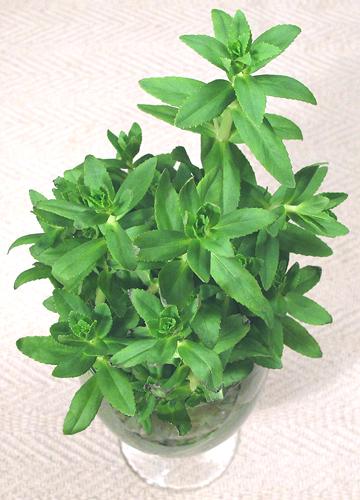 [Ngo Om, Ba Om, Rau Om (Viet); Phak Kayang (Thailand); Tian Xiang Cao,
Zi Su Cao (China); Soyop-pul (Korea); Shiso-kusa (Japan);
Limnophila aromatica]
[Ngo Om, Ba Om, Rau Om (Viet); Phak Kayang (Thailand); Tian Xiang Cao,
Zi Su Cao (China); Soyop-pul (Korea); Shiso-kusa (Japan);
Limnophila aromatica]
This aquatic herb is native throughout Southeast Asia, extending into southern China, Japan and Australia. After the Vietnam war, it was brought to North America by refugees, and is now easily available in the Asian markets here in Southern California. This plant grows well in still water, such as found in rice paddies. It's particularly popular in Vietnam, but is also used in China and Japan. In Chinese, Japanese and Korean, the name of this herb is the same as for Perilla, a very distantly related herb. It is made specific with a suffix meaning green leafy plant (see names above).
The flavor is unique, but has been described as a mix of citrus and cumin. It is also used as a medicinal plant throughout its range, and is often grown as an aquarium plant.
More on Plantains.
More on Herbs.
Most popular in Vietnam, this herb is most used in fish soups, especially the famous Sweet Sour Catfish Soup, but also with chicken. It is often present in the raw herb and vegetable platter usually placed in the center of a Vietnamese table, and can be used in salads. In Cambodia this herb is often dried for use out of season.